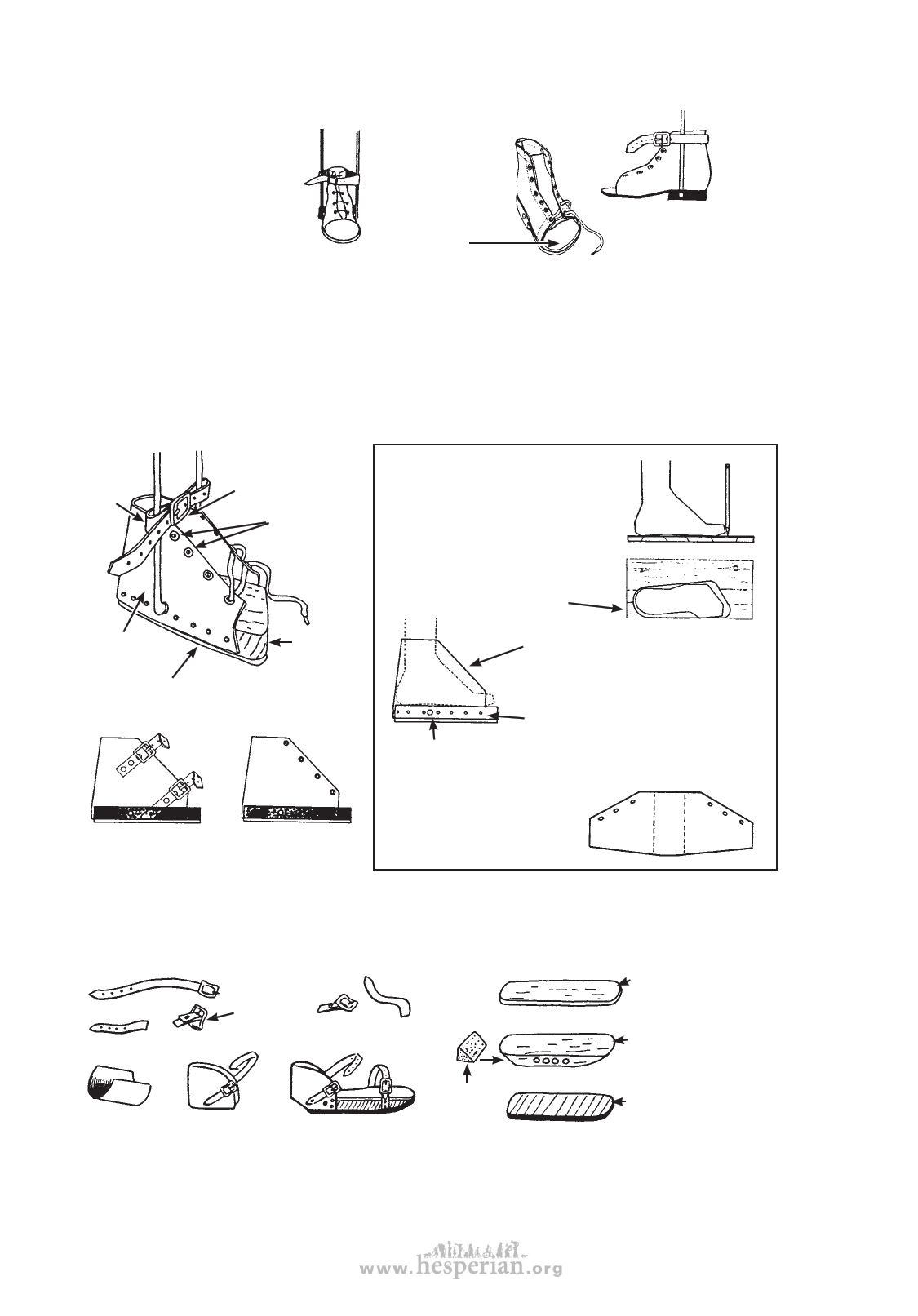
544 chapter 58
SHOES AND CLOGS FOR METAL BRACES
High-top leather shoes
often work best,
especially in communities
where children
usually wear shoes.
Shoes are easier
to put on when
the whole
top can open
wide. It may
help to cut off
the front part
of the shoe.
Leaving the
toes open
to ‘breathe’
is also
important if a child is
not likely to wear (or
wash) stockings.
For adding thicker soles and making other changes, it helps to buy shoes with
soles that are sewed on. (Today, many shoes have plastic or rubber soles that are
glued on or molded with the shoe. These are much harder to work with.)
Unfortunately, leather shoes are costly. Also, they may not last long in rain and
mud. So, you may want to make simple, low-cost wooden-soled shoes, or clogs.
This design is from Simple Prosthesis Manufacture.
buckle
rivet
eyelets
leather
top
wood
base
rubber sole
(can be made of old car tire)
strap clog
lace-up clog
1. Draw around the foot on a
piece of wood about 2½ cm.
thick. Be sure to use a wood
that is not likely to split.
2. Leave extra space as shown
(to allow for child’s growth).
Cut out the piece of wood.
3. Carefully draw this shape on a
piece of paper, using the length of
the clog as a guide. Then cut it out.
Put nails here.
Drill hole for brace. 1/3 of the way up clog.
4. Now draw both sides of
the leather top. Between
the 2 sides add the width
of the clog.
In communities where most children go barefoot, a disabled child may prefer more
open clogs. This design is adapted from Huckstep’s Poliomyelitis, and the ‘Jaipur
Sandal’.
leather
straps
1/4 inch or 1 cm.
water-resistant
plywood or hardwood
light, strong wood
(drill holes to make
lighter)
sponge
rubber
strong rubber sole
(car tire)
Note: These open clogs are hard to fit on deformed feet or feet with tiptoe
contractures. In such cases, high-top clogs or boots work better. Or use plastic
braces molded to fit the foot.
Disabled village Children